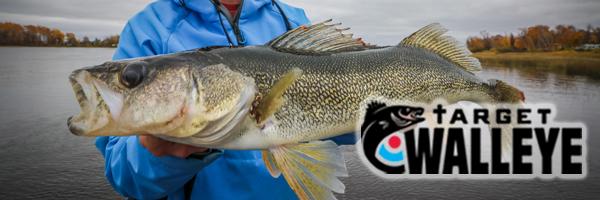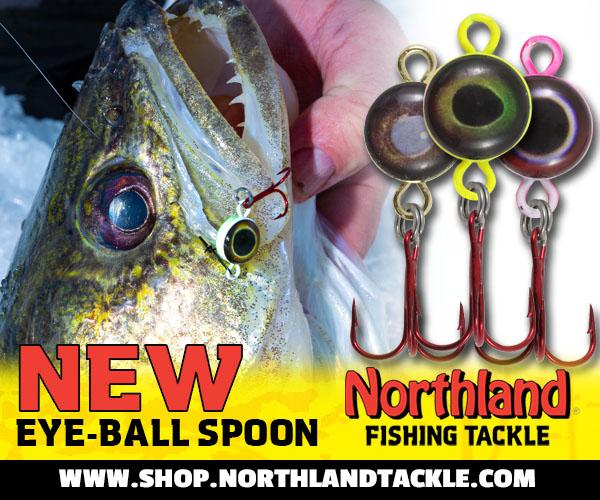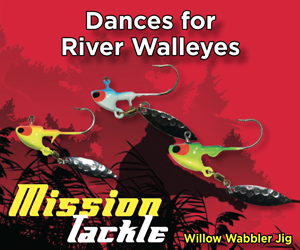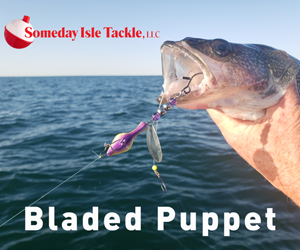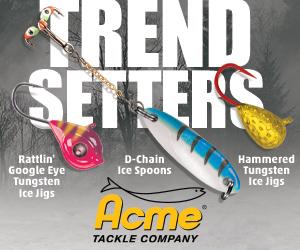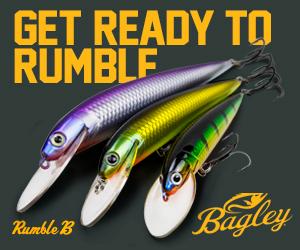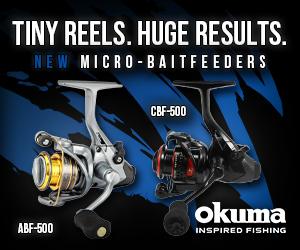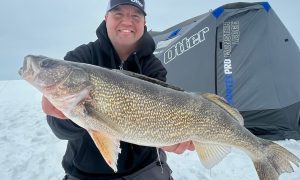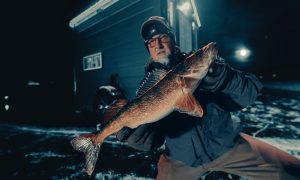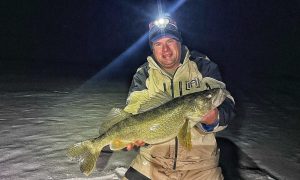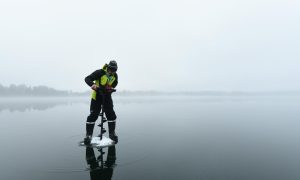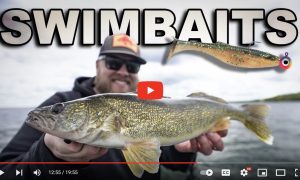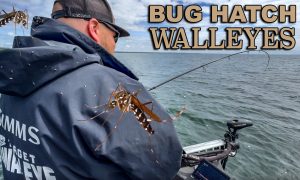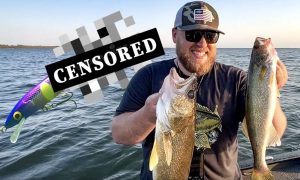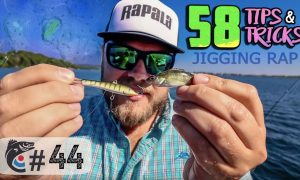 |
|
|
|
Biggest MALE walleyes ever???
|
|
With most all fish species (?) females tend to grow waaaay more bigger-er than the males…unless you live up der in Canada where every fish seems to grow to stupid-big-dumb sizes.
Have a look-see at this 29″ male Bryan Bogdan caught out of Wekusko Falls Lodge in northern Manitoba — such a gnarly fish!!!
Only other male walleye I’ve ever seen/heard of getting THAT big was was Jason Matity’s 29-incher he snatched outta SK’s Last Mountain Lake. Btw that’s not a frozen-over eyeball…it’s cataracts from old age:
There’s a pile of info on how to tell if big walleyes are male or female in the full Gord Pyzer write-up here, few interesting excerpts below from his collab with Jeff Matity (who heads up SK’s Fort Qu’Appelle Fish Hatchery):
> Jeff: “When compared with much younger female fish of comparable length, males…have heads that are disproportionately larger and longer. Their eyes are often clouded over with cataracts, their pigmentation changes from gold to grey, there’s a thickening or ‘stubbiness’ to their fins and roundness to the caudal fin (sloughing off most or all of the yearly growth of fin edges) and a leanness to their bodies.
> “…Males seem to nearly ‘stunt’ at a smaller age, while the females grow considerably larger. That’s because increased body size means increased egg mass and volume for increased reproduction.
> “Mother Nature does not urge males to grow as big, since sperm are infinitely tiny compared to eggs. As long as an individual male is healthy, he can produce fresh, viable sperm for the entire spawning season, unlike the one-shot quantity of ripe eggs from a female.”
Keep reading here to learn why these 29″ male walleyes grew so big…otherwise just make sure you have Baby Sinclair fishin’ with you, and he’ll let you know what’s what:
|
|
 |
|
“Cheater rig” for dirty river walleyes.
|
|
I’m usually an artifical-only enthusiast when chasin’ walleyes…but sometimes you gotta bust out all the tricks when it comes to out-fishing your buddies lol. This simple “cheater rig” straight-up catches ’em [!!!] when you’re dealing with swift current, and cold dirty water:
We were fishing on the US side of the Rainy River near Baudette, MN. The spring walleye run there is no secret…but the fall run can be just as good-er thanks to massive schools of emerald shiners pushing upriver from the main lake…walleyes aren’t usually far behind.
|
|
|
Inline vs spinning reel debate.
|
|
We’ve come a long way from those wooden jiggle sticks your grandpappy used to use in the darkhouse…handlining in panish next to a wood-burning stove. Nothing wrong with that [!] but if you’re looking to up your game, there’s a pile of new options for hardwater reels.
So what’s best: Spinning gear or new-school inline reels? We picked the brains of a couple diehard ice-heads to get their scoop on the benefits of each. Full write-up on TargetWalleye.com, few excerpts below:
There’s a reason many old-school guys stick with spinning gear for big panfish: It’s worked for YEARS! Big-pannie wizard John Hoyer is one of those fellas who loves him some spinning gear on ice, so we tracked him down to get his take on it all:
> “Part of the reason I like spinning reels is the way I hold the rod…I pistol grip, so the longer stem of a spinning reel makes it easier to dial-in that snappy cadence I like.
> “Big bull ‘gills pull hard…having a quality drag is everything. I run a lot of the same high-end spinning reels — size 10 Abu Garcia Revos — I use in the summer [for panfish] on my ice rods.”
Bonus points for getting a reel you can use all year round….
A constant knock on spinning reels is line twist — Hoyer has a cheap and easy way to combat it:
> “I’ll change line A LOT throughout the winter, but I’ll just swap out 50′ or so at a time and connect ’em with a joiner knot.
> “A little thing I do is put a small piece of tape over the joiner knot so the line doesn’t get caught when dropping onto fish.”
Essentially the little brother of fly reels, inlines give ice-heads a big spool that spits line out end-over-end. Biggest plus is its ability to reduce line twist and memory…so your bait isn’t doing the “circle of death” and spooking off that 10″ bluegill.
Fish-head Adam Bartusek is a new-school ice junkie who exclusively rocks inline reels for panfish. What he had to say below:
> “Having jig control on the drop is big for me. On the inlines I use, you pull the line out…so if you see a suspended mark on the way down…can stop the jig on a dime.
> “On some of the pressured lakes I fish in the metro, dropping too fast passed fish can spook ’em…an inline slows me down in a good way.”
Old-school inlines rocked a 1:1 gear ratio, but a lot of new ones have beefed-up gear systems. Adam’s go-to — the Clam Ice Spooler Elite — has a 2:3:1 ratio. This is a huuuuge plus, especially if you’re fishing over deep water for BIG basin dwellers.
Adam also has a unique way of gripping his reels: He opts for a more over-the-top grip…keeping a finger on the blank at all times.
> “I use this grip 100% of the time for panfish…feels more balanced in my hand.”
More balance = better jig control for fooling big, smart panfish.
|
|
 |
Will Pappenfus (@walleyewillfishing) has been whackin’ and stackin’ northern MN gravel lizards every which way…. Stuck this one pitching a 1/4-oz Northland Long Shank Fire-Ball Jig with a creek chub to a shallow 4′ rock-to-sand transition:
Will’s caption under the pic said:
> “No better bite than a fall bite.”
Guess his bud James Reese (@jreeser89) was doing a little “trolling” from behind the keyboard and commented:
> “Idk man have you ever tried steak without ketchup?”
Lol! Nicely played, James! I’m not taking sides, but:
Little proof that “trolling” on social media doesn’t have to be malicious…can be tactful and fun for everyone involved. Just my “if you don’t have anything nice to say, then don’t say anything at all” preach-fest of the day….
|
|
|
Know you’re obsessed with ice fishing when…
|
|
…you bust out your MarCum LX-7 and vertical jig for fall crappies:
That’s ^ Blake Tollefson (@btollefsonfishing) who I’m NOT judging…’cuz I’m starting to get the ice itch too…. Not quite there yet, but for sure starting….
Noticed his Lithium Shuttle is at 88%…which means he’s probably been using it for several days already lol.
|
|
News
At the Adams County Regional Park in Brighton. Free kids event with giveaways, and seminars from Keith Kavajecz, Randy Gaines, Bob Luellen and more.
|
TargetWalleye.com Highlights
|
Tip of the Day
You might already own the Phantom Tilly for ice fishing, but don’t be afraid to take it for a test ride on fall open-water gravel lizards. Here’s what NWT pro Randy Gaines says makes it unique, and how he likes to fish ’em right now:
> One of the Tilly design differences that sets it apart from the rest is a larger tail which incorporates a side-to-side rattle chamber designed to make a subtle click as you work the bait. Couple this with a side-to-side roll and this “walking the dog” swimming action puts the Tilly in a class of its own.
> My favorite way to fish the Tilly in the late summer and autumn is to search out those isolated rock humps, deep reefs, or to stalk and hunt for those isolated bottom-hugging ghosts that show themselves on your locator.
> I start with a long cast and let the Tilly free spool to the bottom watching for any line twitches as it falls. Once it makes the bottom, I engage the reel starting a lift and fall cadence. On the fall, I like to keep my line on the edge between free fall and controlled. With a little practice and a high-speed reel, this will become an old hand.
> Most strikes will happen during the falling part of the cadence so, be prepared for an angry ghost on your upswing.
> You’ll quickly develop your own style and always keep in mind that the aggression or jigging cadence can, and will, change with feeding patterns and weather conditions. Being able to adapt to the day and conditions will certainly up your Tilly experience.
|
|
|
|
|
![]()

